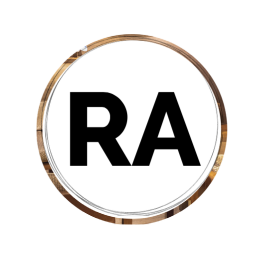What is trend forecasting and how do I do it?
Ugly Dad shoes.
Co-ord dressing.
Artisan-made leather goods.
Anything transparent (i.e. clear heels, shoe straps, backpacks).
These are trends we've either loved or hated, they've emerged, and may we rode that wave as each direction engulfed the runway and retail store. How do these trends come to be? How does one define a trend, and who is the authority that dictates them?
Trend forecasting can be a game of numbers. Defined as "the technique of predicting the goods or services that consumers are seeking". Trends can be either short-lived, also known as a micro trend, for about 1-2 years or a longer-term macro trend, spanning a decade or more. Think skinny jeans as a macro trend, wedge sneakers as a micro trend.
WGSNis the top trend-forecasting company in the world. Though there are many other big named agencies, the London-based company founded by the Worth brothers, has been around since 1998 and serves multiple clients all over the world. According to the WGSN team, to forecast a trend is "part art, part science, part math and part magic."
WGSN have refined their process in discerning what makes a macro trend based on looking at quantitative statistics gathered all over the world. They then translate these numbers for their clients and their business, explaining how they can adapt these forthcoming trends.
As mentioned in an article published on Fashion Insiders Co., there are four conventional techniques to Trend Forecast:[JP1]
The Delphi Technique- developed by the RAND company in the 1950s, this framework consists of conducting several rounds of experts answering questionnaires. The idea behind the process is that said experts will eventually come into a general consensus.
The Time-Series Forecasting Technique- the most commonly used technique in the industry dictates that trends can be determined based off of measuring data over a given period.
Scenario Writing- a method where the forecaster imagines all the possible outcomes based off of a set of conditions. After assessing all plausible situations, the forecaster must determine what the most likely outcome would be.
Subjective Approach - Forecasters must determine possible outcomes using their instincts. By utilizing their personal thoughts and feelings, forecasters are to identify objective trends during brainstorming sessions, away from criticism and peer pressure.
Interested in learning more about trend forecasting and how you could apply this to your business? Here are a five, free trend forecasting resources, a list compiled by Belinda Jacobs fortechpacks.co, you can check out:
WGSN- Their online blog, WGSN Insider, is a free resource filled with trends reports in fashion, lifestyle, and culture… among many other industries.
Trendstop- Just sign up with your email and receive free trend reports that are easily downloadable.
The Doneger Group- the Doneger Weekly newsletter is a great resource of inspiration and fashion news.
WeConnect- Check out their Trends section on the WeConnect website, where you can search for trends based on season and category.
Fashion Snoops- Subscribe to their newsletter for free trend reports.
The Retail Training agency - we have a two-month course that walks you through how professionals in our industry create and use trend forecasts. Ultimately the objective of this workshop is to improve your business results - and ensure you continue to have happy customer-fans.
How do we do trend forecasting?
Trend-forecasting is nothing new. This function of our industry has been significantly impacted (enhanced?) in the digital age. Professional forecasters rely more heavily on data gathered, analyzed and projected (some call this AI, but true AI has yet to find itself commercially available in fashion forecasting).
Nonetheless, the core of a good trend forecast remains static: a focus on the customer and their influences.
